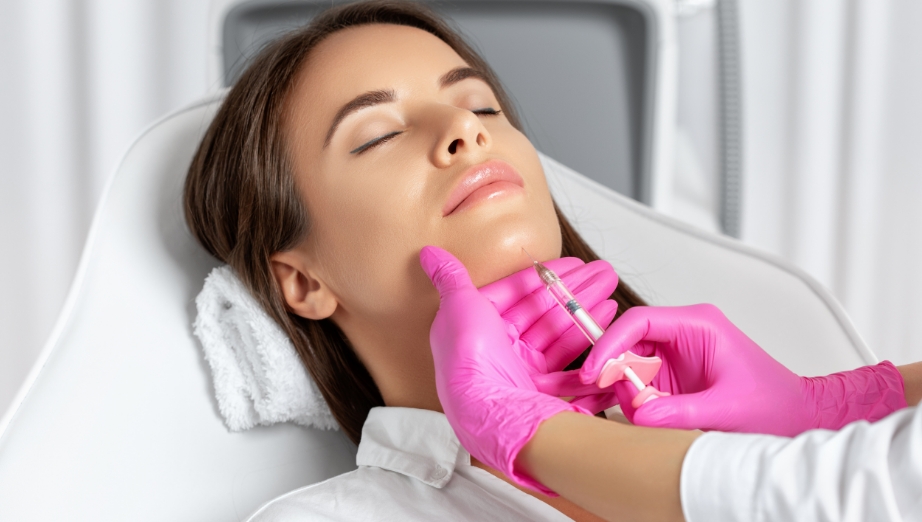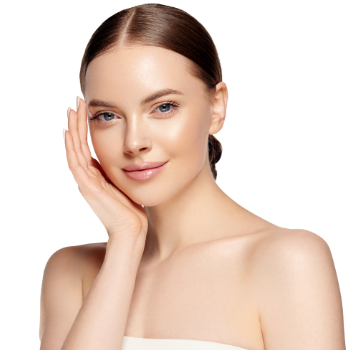The lower third of the face-including the chin, jawline, and adjacent soft tissues, plays a central role in shaping facial proportion and balance.
The chin provides vertical height and anchors the transition between the face and neck. Its position and projection influence the harmony of surrounding features such as the lips, nose, and cheeks.
A professional consultation focuses on understanding how this area changes naturally over time and how environmental and lifestyle factors contribute to those changes.
The goal is to help you make informed, realistic, and safe decisions about your long-term skin and facial health.
How and Why the Chin Area Changes
Ageing affects all layers of the face,bone, muscle, fat, and skin – through interconnected biological processes. Your clinician can help you understand how each component contributes to visible differences in contour and definition.
Skeletal Foundation – The bones of the lower face provide shape and projection. With time, bone resorption, a gradual decrease in bone density,can shorten or soften the jawline, subtly changing facial angles and support.
Muscle Activity – Muscles around the chin and mouth, including the mentalis and depressor anguli oris, are in constant motion for speech and expression. Repeated contraction and relaxation may influence how the overlying skin moves and folds.
Fat and Connective Tissue – The deep fat compartments that cushion the lower face can shift or reduce in volume over time.Combined with connective-tissue changes, this may influence the appearance of fullness and transition between the chin, jawline, and neck.
Skin Quality and Elasticity – The dermis naturally produces less collagen, elastin, and hyaluronic compounds with age. Reduced structural proteins and hydration lead to less resilience and smoothness. Cumulative UV exposure and oxidative stress further accelerate these effects.
Lifestyle and Environmental Influences
Daily habits strongly affect tissue health:
- Sun exposure without protection can break down collagen fibres.
- Smoking and alcohol reduce oxygen supply and delay tissue repair.
- Stress increases cortisol, which may slow collagen synthesis.
- Poor sleep or nutrition limits regenerative processes.
- Dehydration impacts skin flexibility and tone.
These factors do not occur in isolation, they interact across the deeper and surface layers of the skin. Understanding them allows your clinician to recommend realistic, evidence-based strategies for maintaining structure and skin integrity.

Your Consultation at Shellharbour Skin
Your consultation is a comprehensive, discussion-based appointment centred on your goals and suitability.
During this appointment, your clinician may:
- Assess your facial structure, proportions, and skin health
- Review your medical history, medications, allergies, and lifestyle factors
- Discuss your aesthetic goals and expectations
- Explore non-surgical treatment approaches suitable for supporting chin and lower-face structure
- Determine your clinical suitability for any potential treatment
- Provide information about preparation, aftercare, and recovery expectations
- Support you in making an informed decision about next steps
- Opportunity to ask questions and concerns
This consultation ensures that any recommendations are personalised and based on your health, safety, and individual preferences.
Approach Discussions
Following your assessment, your clinician may outline management pathways suited to your needs.
These discussions are educational and focused on helping you understand facial structure and safe, evidence-based approaches within a medically supervised setting.
Topics may include:
- Observation or monitoring: When no immediate treatment is required.
- Lifestyle and skin-care guidance: Recommendations on hydration, sun protection, and home care to support long-term skin quality.
- Professional skin treatments: Discussion of light- or energy-based options (e.g., Ultraformer MPT – HIFU, Alma Hybrid CO₂, Laser Genesis) where appropriate.
- Medically directed approaches: Where suitable, options performed under medical supervision that act beneath the skin’s surface may be discussed. These are only undertaken after an in-person medical assessment and are not named or advertised publicly.
- Collaborative or referred care: When additional medical or allied input may support your care plan.
Your clinician will explain the reasoning behind any recommendations and provide clear information on safety, aftercare, and review.
Aftercare & Follow-up
Following any clinical treatment, your clinician will guide you through an individualised aftercare plan, which may include:
- Avoiding strenuous activity or heat exposure for a short period
- Pausing active skincare until advised
- Keeping the area clean and avoiding makeup initially
- Attending a follow-up review as recommended
Recovery times vary between individuals. Your clinician may discuss what to expect based on your personal treatment plan.
Risks and Considerations
All aesthetic treatments carry potential risks and side effects.During your consultation, your clinician will discuss these thoroughly and explain the steps taken to minimise them.
Temporary effects may include:
- Redness
- Swelling
- Bruising
Less common risks can include:
- Infection
- Bleeding or haematoma formation
- Skin discolouration
- Itching or irritation
- Skin ulceration
- Vascular compromise
- Localised weakness or tenderness
If you experience pain, discolouration, or persistent symptoms after treatment, contact the clinic promptly for assessment.
Cost and Planning
Consultation fees vary depending on the time required and complexity of your assessment. Any further treatment planning or associated costs are discussed only after your individual consultation and clinical suitability have been established.
Important Information
- Shellharbour Skin discusses specific treatment options only within consultation.
- We do not advertise or promote prescription-only products.
- All services are provided following a complete clinical assessment and informed consent process.
- Results and recovery times vary between individuals.
- Shellharbour Skin services are intended for adults aged 18 years and over.
- This content is provided for educational purposes only and does not replace professional medical advice.
Practitioner Transparency
Consultations and skin treatments at Shellharbour Skin are provided by a multidisciplinary clinical team:
- Dermal Clinicians – qualified skin professionals who are not registered under AHPRA but hold tertiary qualifications in dermal science or dermal therapies. They provide skin treatments and consultations within their professional scope and under clinical supervision.
- Registered Nurses – AHPRA-registered health practitioners who perform skin and aesthetic treatments within their clinical training and scope of practice.
- Medical Practitioners – AHPRA-registered doctors experienced in skin health and aesthetic medicine who oversee and support all clinical services.
All treatments are undertaken within a medically supervised environment, ensuring that each patient pathway is reviewed for clinical suitability, safety, and evidence-based care.
You can verify registration for medical practitioners and nurses at ahpra.gov.au
Frequently Asked Questions
What role does the chin play in facial balance?
The chin is a key structural feature that defines the lower third of the face.
It provides vertical height and contributes to how the face transitions into the neck and jawline. Even subtle changes in projection or contour can influence the overall proportion and symmetry of surrounding features like the lips, nose, and cheeks.
Are chin concerns only aesthetic?
Not necessarily. Changes in muscle function, posture, or bite alignment can also influence chin appearance and comfort.
If relevant, your clinician may recommend a multidisciplinary approach involving dental or musculoskeletal professionals to ensure comprehensive assessment.
Can lifestyle factors affect the chin area?
Yes.Habits such as sun exposure without protection, smoking, alcohol use, poor sleep, or dehydration can affect tissue repair, collagen synthesis, and hydration levels. These influences interact with deeper structures, contributing to visible differences in tone and resilience over time.Your clinician can discuss strategies to maintain skin integrity through protective and restorative habits.
If you have a question, get in touch and one of our staff will be in touch shortly.




